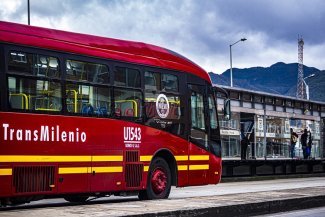North Korea has taken a leap without safety net in its perilous gamble to become a real threat for the United States and its main allies in East Asia, Japan and South Korea. The renewed testing of its ballistic missiles capable of hitting South Korea, Japan and even the US, and the precarious race to equip those rockets with nuclear warheads is an illustration of this strategy, pursued despite the political repercussions of antagonising China, North Korea’s last real ally, which is no longer concealing its disapproval at the audacity of the Kim Jong-un regime.
At least nine ballistic missile tests have been ordered this year alone by Kim Jong-un – in addition to other short and medium-range rocket tests of defensive nature –, who has already headed considerably more launches than his father, Kim Jong-il and his grandfather, Kim Il-sung, the founder of North Korea.
The experts are undivided on the matter: North Korea is making qualitative progress in the development of its missiles and their ability to reach strategic targets in the Pacific.
For the moment, this missile crisis has not crossed the redline and reached the level of a nuclear crisis, but repeated rumours that the country’s sixth atomic test (since 2006) is imminent, leave little room for optimism.
Michael Hayden, who headed the CIA between 2006 and 2009, has been clear in his assessment of the threat. At this rate, according to Hayden, the North Korean army could have an intercontinental ballistic missile capable of reaching cities on the West Coast of the United States before the end of Donald Trump’s current term.
North Korea’s belligerence also sends out a very strong message following the recent election of a moderate, Moon Jae-in, as the new president of South Korea. Moon has reached out to Kim, but it is not Seoul that Pyongyang wants as an interlocutor in this war of nerves.
North Korea’s missile tests are above all designed to provoke a reaction from China over the new anti-missile system deployed by the United States in the region, in South Korea more specifically, as protection against North Korea. This manoeuvre has created a serious rift between Washington and Beijing, which views the THAAD system – which has been operative for its first phase since April and monitors a large part of its territory – as a threat to its security.
The deployment of THAAD has already damaged economic relations between South Korea and China, the South Koreans’ biggest trading partner. Beijing had no qualms about imposing sanctions on Seoul to press for the withdrawal of the missile shield.
As a sign of goodwill to Beijing, the Seoul Government has stopped the installation of new rocket launchers needed to complete the second phase of the US missile shield deployment.
When, after the latest North Korean missile tests, President Trump said that North Korea was “lacking respect for China”, he was overtly referring to the first serious repercussion of the country’s military actions, and the attempt to place China on a side of the last Asian iron curtain it can no longer afford to be on, in the context of the global economic race.
North Korea’s menacing strategy holds an added risk for Pyongyang. It is only sustainable if it periodically enhances its capabilities. The internal crisis – detected by South Korean intelligence services – within the highest ranks of North Korea’s armed forces could transcend the wall of force raised in the institution by Kim Jong-un, with executions and defenestrations of members of his innermost circle, since he assumed supreme power in 2012.
The North Korean leader’s stability could be seriously undermined if the international community and China itself were to increase the sanctions against his regime, placing the very survival of his country at risk. At the last G7 meeting held in the Sicilian town of Taormina, at the end of May, the leaders urged North Korea to abandon all nuclear and ballistic missile programmes “in a complete, verifiable and irreversible manner”. The G7 made it clear that it was ready to step up sanctions.
Countdown for Kim Jong-un
In this race against the clock, North Korea is fully aware that the United States is also making key progress in its own efforts to create a more efficient missile defence system. Trump has already intimated that one of the next North Korean missiles could be destroyed by a US rocket, which could place Pyongyang in front of the redline of military conflict.
It is worth remembering that, under Trump, the US Army has already taken steps in the Middle East that would have been inconceivable under Obama, including the attack on Syrian army installations, which created tension with Russia and had serious implications for the United Nations. Not only is it not inconceivable that a US missile might shoot down a North Korean ballistic missile in the near future, it is, in fact, the most likely scenario if this crisis continues on its current trajectory.
The only potential limitations would be technological, as the type of solid fuels the new North Korean missiles are using mean that they can be launched within minutes and from silos hidden in the mountains or even from mobile platforms, making it slower and more difficult to detect them. The current US missile defence system relies, above all, on satellite detection of launch preparations, and North Korea’s fuel system innovations have now complicated that task.
But it would seem that North Korea is underestimating the United States’ military capability in a region even more central, perhaps, to Washington’s global plans than the Middle East.
Added to the missile defence system is the cyberwar programme, sped up by Barack Obama, designed to thwart the launch of missiles at their source. The consequences of a cyberattack are always likely to be less devastating than a ground strike. However, shooting down a missile with another missile in the air is like trying to stop a bullet with another bullet. An attack of this kind would have more chances of succeeding if the missile were destroyed before it reached the air, which would imply a direct attack on North Korean soil.
One of the early measures taken by the new CIA director appointed by Trump, Mike Pompeo, was the creation of a dedicated unit to take control of all the intelligence analysis and the covert operations underway or planned in relation to North Korea’s nuclear capability and missile systems.
The United States’ new “anti-missile shield” is not only being boosted by the money being poured into the multi-million dollar programme, but also by increasing pressure from its main ally in the region, Japan. If the next time a North Korean missile is launched, it does not hit Japanese waters, like the last one did, but its inhabited coast, Japan may not think twice about “officially” taking its defence back into its own hands and taking the sophisticated counterattack systems the country already “extra-officially” possesses out of their hangars.
North Korea’s time is running out and its perilous strategy is coming to an end. There are not many, if any, ways out of this dangerous blind alley. One could be to urgently relaunch the six-party talks (the two Koreas, Japan, China, the United States and Russia) interrupted in 2006, and to review the sanctions imposed on Pyongyang. This “solution” would require that certain governments bite the bullet in the face of North Korean arrogance, but the advantage of this option is that it would be backed by the will of China and the new South Korean administration to push them forward.
Another, much riskier, more costly option, and one not backed by a global consensus, would be the forcible (and surgical) removal of Kim Jong-un from power. Without China’s approval (and collaboration), only a few self-styled visionaries from the Trump administration seem willing to put it on paper and risk a debacle that, if the operation fails, could plunge the world into a war with unimaginable consequences.









